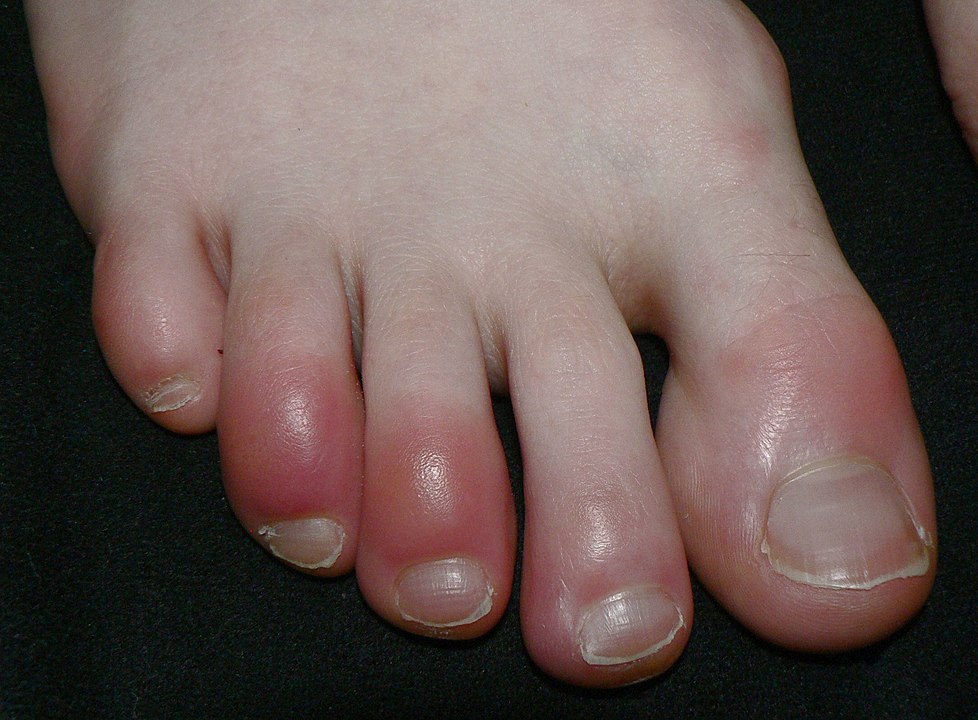Dermatologists and family doctors are reporting unusual numbers of young people with chilblains, prompting the question: Is there a possible link with the Covid-19 pandemic?
Chilblains, or perniosis, is a condition affecting the fingers and toes, in which blood seeps into the surrounding tissues and causes redness, itching, inflammation and sometimes blisters.
Usually, chilblains are caused by damp and cold conditions. However they can sometimes be linked to other conditions, including lupus and vasculitis.
“On a weekly basis I’m seeing four time as many cases of teenagers with chilblains,” dermatologist Jos Vanhee told VRT Radio this morning.
“For a year now we have seen an inexplicable increase in the number of patients with chilblains. Even in full summer.”
The problem seems particularly to affect adolescents. And the apparent epidemic of the condition is confirmed by the Royal Belgian Society for Dermatology.
“The typical patient with chilblains is a 16-year-old girl,” Dr. Vanhee said. “Since corona, it is noticeable that more boys are also coming in.”
The problem is not confined to Belgium; the same phenomenon has been reported across Europe, And since it seemed to coincide with the lockdown and the pandemic, there was speculation that chilblains might be a manifestation among young people of a Covid-19 infection.
Young people are known to be less susceptible to the more dangerous symptoms of Covid-19. Could chilblains be a particular way the virus affected the young?
Not according to another dermatologist, Dr. Anne Herman of the Saint-Luc university hospital in Brussels.
In June last year, Dr. Herman published a paper that looked at 31 cases of chilblains, mostly teenagers and young adults, who were given a series of tests to detect whether they had been infected with the coronavirus. None tested positive.
“Chilblains appeared not to be directly associated with COVID-19 in this case series,” the paper concluded. “Lifestyle changes associated with community containment and lockdown measures are a possible explanation for these lesions.”
However another study carried out by the Massachusetts General Hospital in Boston found skin conditions including chilblains to be a common occurrence among patients who had been infected with Covid-19 and recovered – the so-called ‘long haulers’.
Chilblains were not the only problems arising in long haulers, but the condition lasted more than 60 days in six patients, and more than 130 days in another two. And according to that study, the condition of chilblains in long haulers is even “commonly known as Covid toes”.
Alan Hope
The Brussels Times

